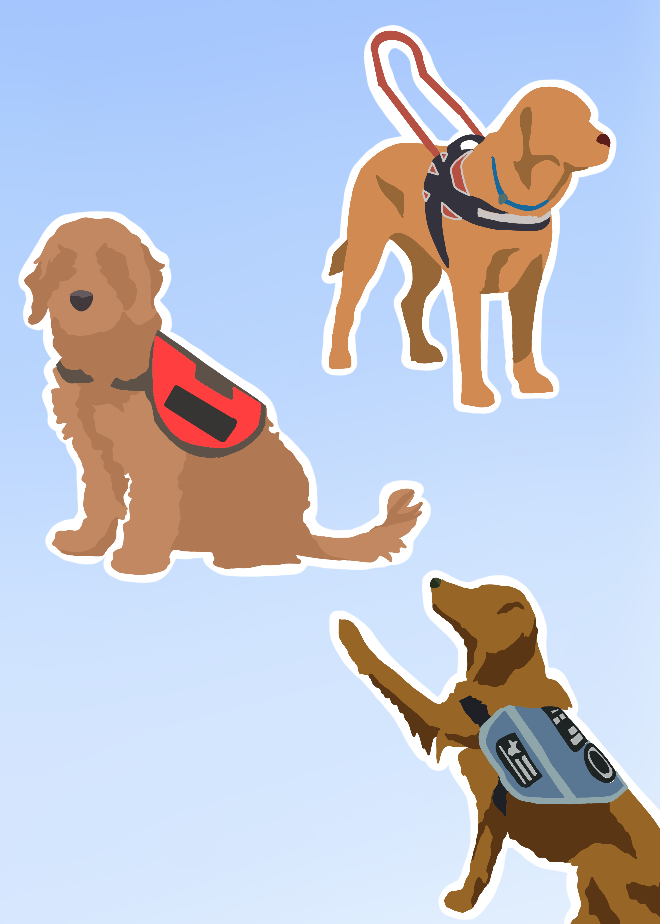
Student speaks on Service Dog Awareness Month
By Bridget Gum-Egan
September is National Service Dog Awareness Month, so I would like to shed light on the kinds of service dogs.
In the informational flyers from the nonprofit organization Canine Companions, where I got my dog, they make a clear distinction between service dogs, medical alert dogs and emotional support animals (ESAs). They often state that the distinction is important because service dogs have stricter and more expansive licensing and training, establishing a hierarchy between different dogs. So, let’s dive in.
A service dog is a dog trained to do specific tasks for someone with a disability or some kind of physical limitation. They are provided more access in public places, which makes their licensing stricter.
Medical alert dogs are specially trained to alert others or their owner to an upcoming medical crisis. For example, a person with diabetes may get alerted to a sudden drop in blood sugar or someone with epilepsy may be warned of a seizure before it starts.
ESAs are more expansive and can technically be any animal that’s trained to provide some kind of emotional support. For instance, someone with anxiety may need to pet a cat when they’re having a panic attack to calm themselves down.

In the disabled community ESAs can cause problems because anyone can register any animal as an ESA, sometimes without any formal training. There are people who take advantage of this system and claim their animal is an ESA to get their pets into public places. This poses an issue when people begin to associate poorly behaved and inadequately trained animals with all service animals, making restrictions against them all more rigid, which can have a serious impact on the disabled community as a whole.
The other problem for ESAs is that there are not as many organizations who specifically train animals to perform certain tasks. For example, my dog, Sheriff, was bred and then trained for the first two years of his life to perform highly specialized and complex tasks. He can pick things up for me, take off my coat, push accessible door buttons, and pull open drawers and doors, all of which required extensive training. Meanwhile, there aren’t nearly as many of these same programs for ESAs.
On the other hand, people with mental illnesses or mental health concerns have some form of limitation in their lives, just like people with other disabilities. Their mental illness may make things like going to and performing in school or work challenging, much like it is for me, a wheelchair user, without my service dog. ESAs do provide their owners with important services and care for their owners that is essential to their daily functioning.
Besides licensing restrictions, these stereotypes and misconceptions seem to be a continuation of the negative biases against people with mental illnesses. Often, all kinds of disabilities are overlooked when they’re not outwardly visible, causing people to not believe or be as compassionate towards people with invisible disabilities. There is less leeway given, which extends to ESAs.
Trying to take advantage of the system by registering any animal, regardless of temperament or training, as an ESA is not the solution to this licensing gap. This causes ESAs and the people who need them to be overlooked and not taken seriously, which can be extremely dangerous and impactful on someone’s life. There needs to be a middle ground to create a balance between these two extremes — a better system designed so everyone, with any kind of disability, can get the kind of support that they need.
Bridget Gum-Egan is a senior English major



